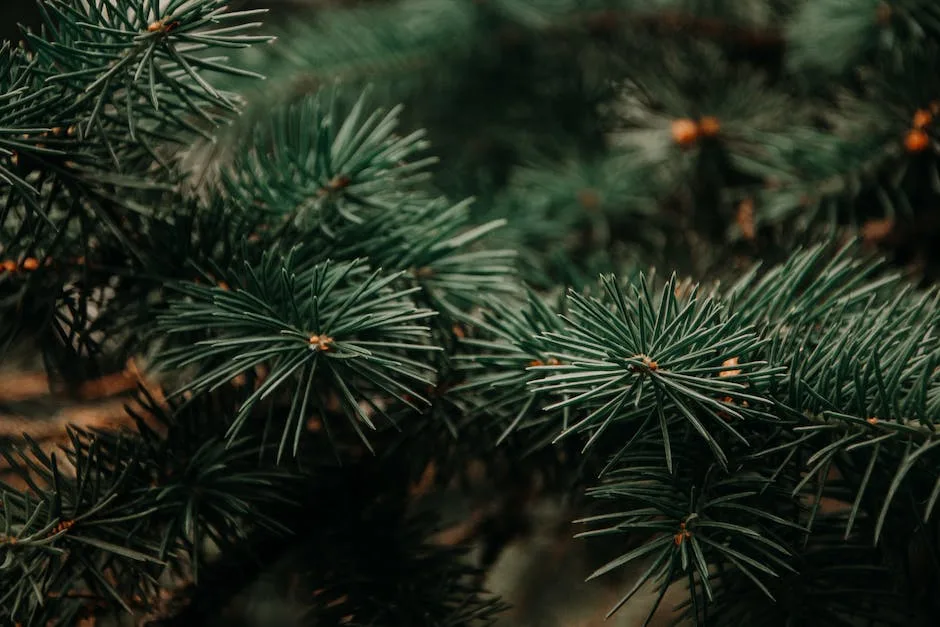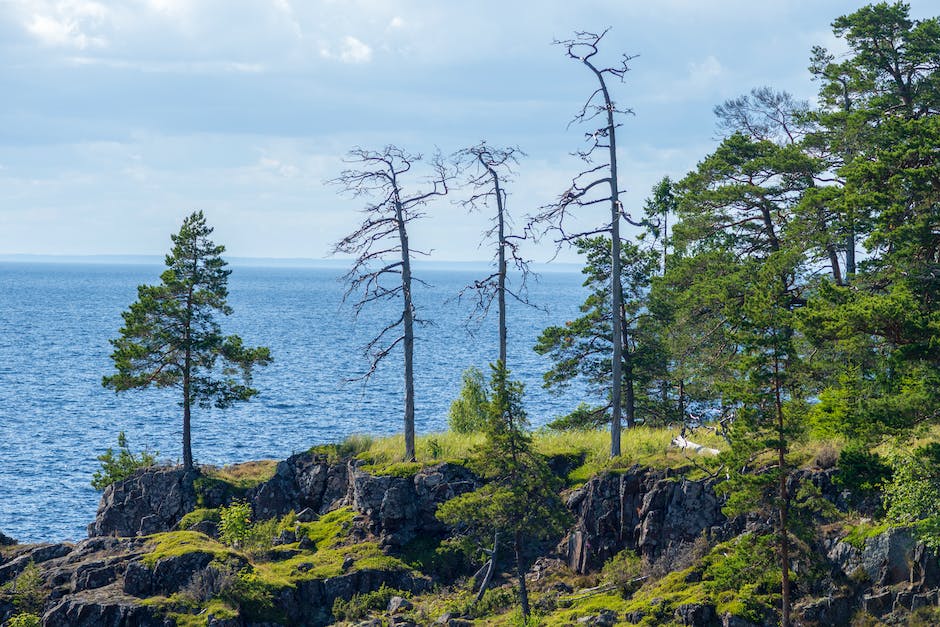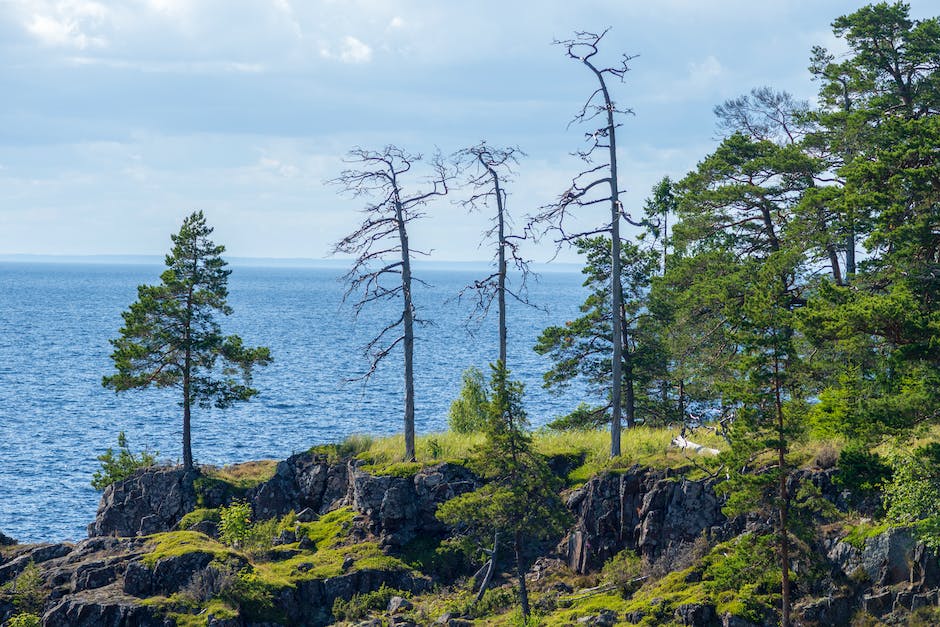A dead pine tree may seem like it is beyond hope, but it is possible to revive it. While it is difficult to bring a dead pine tree back to life, it is not impossible. With the right care and attention, your dead pine tree can be revived and will once again be a beautiful addition to your landscape.
Yes, a dead pine tree can be revived.
Is a pine tree dead if it turns brown?
These are all indications that your trees are dead or soon will be dead. Regardless of beetle attack, a pine cannot survive being brown from July/August until November. Even if no beetles attacked the trees, they simply cannot survive that long without any green foliage. They are likely dead.
It’s easy to keep a Christmas tree alive and fresh if you start with a healthy tree from a local farm. Trim the trunk (and then trim it again) and check the water level of your Christmas tree daily. Keep the tree away from heat sources and take it down before it dries out.
How long will a dead pine tree stand
The decay of wood is a slow process, and a pine tree can stand upright for many years after its death. Over time, the bark and branches will fall off, and the tree will take on a characteristic greyish-silver appearance.
Needle discoloration from green to yellow, then brown through the tree may be indicative of Pine wilt, a disease caused by a fungus. Other symptoms of Pine wilt include brown, gray, yellow needles on new growth, branch dieback, oozing sap, and cankers on stems and/or branches. If you suspect your tree has Pine wilt, you should contact a certified arborist or tree care professional for diagnosis and treatment.
Can a pine tree with brown needles be saved?
There are a few things you can do to help increase drainage and prevent pines from standing in water. If the tree is young, you may be able to trim the rotted roots away from the plant. Proper watering should allow this condition to correct itself over time, though the browned needles will never re-green.
Pine wilt disease is a serious problem for pine trees. It is caused by tiny worms called pinewood nematodes and beetles called sawyers that work together to attack the tree. This results in a disease that rapidly discolors and kills pine trees.
Can pine tree heal itself?
When a tree is wounded, the tree does not heal from the inside out. The tree will seal the wound with specialized “callus” tissue. If you look at an old wound, you will notice that the tree has formed a callus around the edges of the wound.
This is a test to see if a plant is still alive. If the plant is pliable and bends without breaking, it is still alive. If the plant snaps easily, it is dead.
Can pine trees regrow roots
You canroot pine branches, but it’s not as easy as rooting most shrubs and flowers. Plant several pine tree cuttings to increase your chances of success.
A dead tree makes for a dangerous hazard, as it is more likely to fall over than a live tree. It is impossible to predict when a dead tree will fall, so it is best to avoid them altogether. If you see a dead tree, it is best to report it to the proper authorities so that it can be dealt with in a safe and timely manner.
What are the dangers of dead pine trees?
If you have a dead tree on your property, it’s important to take care of it as soon as possible. Not only can it be an eyesore, but it can also pose a serious safety hazard. Dead trees can snap or fall without warning, causing serious injuries. If you have a dead tree, it’s best to have it removed by a professional.
A dead tree can provide excellent habitat for birds and other wildlife. The tree will begin to shed its bark and the wood will soften, especially the innermost portion of the tree’s core. This provides a safe place for animals to nest and a food source for insects.
Why is my pine tree dead
There are many reasons why trees may decline or die. Environmental stress can predispose the tree to be attacked by insects or diseases, or it may kill the tree outright in events like drought or flooding. Additionally, exposure to herbicides or road salts can also cause damage or stress.
Water is key to the health of trees, especially during summer months when the heat can be intense and there is little rainfall. A severe water shortage can cause needles to bend or droop near the needle base, which can then lead to fading and browning of the needles, or to the needles remaining green but permanently bent. This water shortage can be caused by a number of things, such as drought conditions, malfunctioning irrigation systems, or incorrect watering practices. Whatever the cause, it is important to take steps to correct the situation as soon as possible to avoid long-term damage to the tree.
Do pine trees regrow needles?
Pines and other conifers are called evergreens because they have needles that stay alive and green all year round. However, these needles only last for two to four years before they need to be replaced.
Unfortunately, there is no amount of tree care that can bring those trees back. The only thing that can be done with those trees is to cut them down. It can be discouraging to the homeowner to replace the dead trees with new ones.
Why is my pine tree losing needles and turning brown
It’s natural for pine tree needles to turn brown in fall. Although most conifers stay green all year, many people don’t realize that they don’t keep all their needles all the time. Just when oak trees lose their leaves, most evergreens also drop needles—but not all of them.
It is called “winter desiccation” and it’s a big problem for some conifer species. The needle loss affects the tree’s ability to photosynthesize and can eventually lead to death. Diplodia pinea, for example, is a fungus that attacks pine trees during dry periods in winter, causing the needles to fall off.
Do pine trees like sun or shade
Pines are not shade tolerant nor drought tolerant, they will need full sun and well irrigated soil to thrive and reach their full potential. Listed below are a few of the more common pinus species found in abundance in the Atlanta area and surrounding areas.
Pinus strobus – White Pine
Pinus sylvestris – Scots Pine
Pinus pinaster – Maritime Pine
Pinus pinea – Stone Pine
When selecting a pine tree for your landscape, be sure to choose one that is appropriate for the size of your lot and the amount of sunlight the site receives. Pines can grow quite large, so be sure to allow for plenty of room for the tree to mature.
When choosing a planting location, be sure to avoid areas that are too wet or too dry. Pines need well-drained soil that is moist, but not soggy. A raised bed is a good option if you are unsure about the drainage in your yard.
Be sure to water your pine tree regularly, especially during the first year after planting. Once established, pines are relatively drought tolerant, but will still need supplemental watering during extended periods of dry weather.
Pine trees are known for their large lateral branches and shallow root systems. Using a pine tree fertilizer in addition to regular watering and pruning helps keep these trees healthy and better able to tolerate stress, insects and pine tree diseases.
Warp Up
If a pine tree has died, it is possible to revive it if the roots are still alive. You will need to remove any dead branches and replant the tree in fresh soil.
A dead pine tree cannot be revived.
I’ve always been drawn to trees.
As a kid, I spent most of my free time outside, climbing, exploring, and trying to figure out the names of the trees around me.
That early curiosity eventually led me to study arboriculture and horticulture at Michigan State.
Later, I completed a degree in forestry at the University of Michigan.
I’ve been working in tree care and education ever since.
These days, I enjoy helping people learn more about the trees in their own backyards.
How they grow, how to care for them, and why they matter.
You don’t need to be an expert to appreciate trees.
A little curiosity goes a long way.
